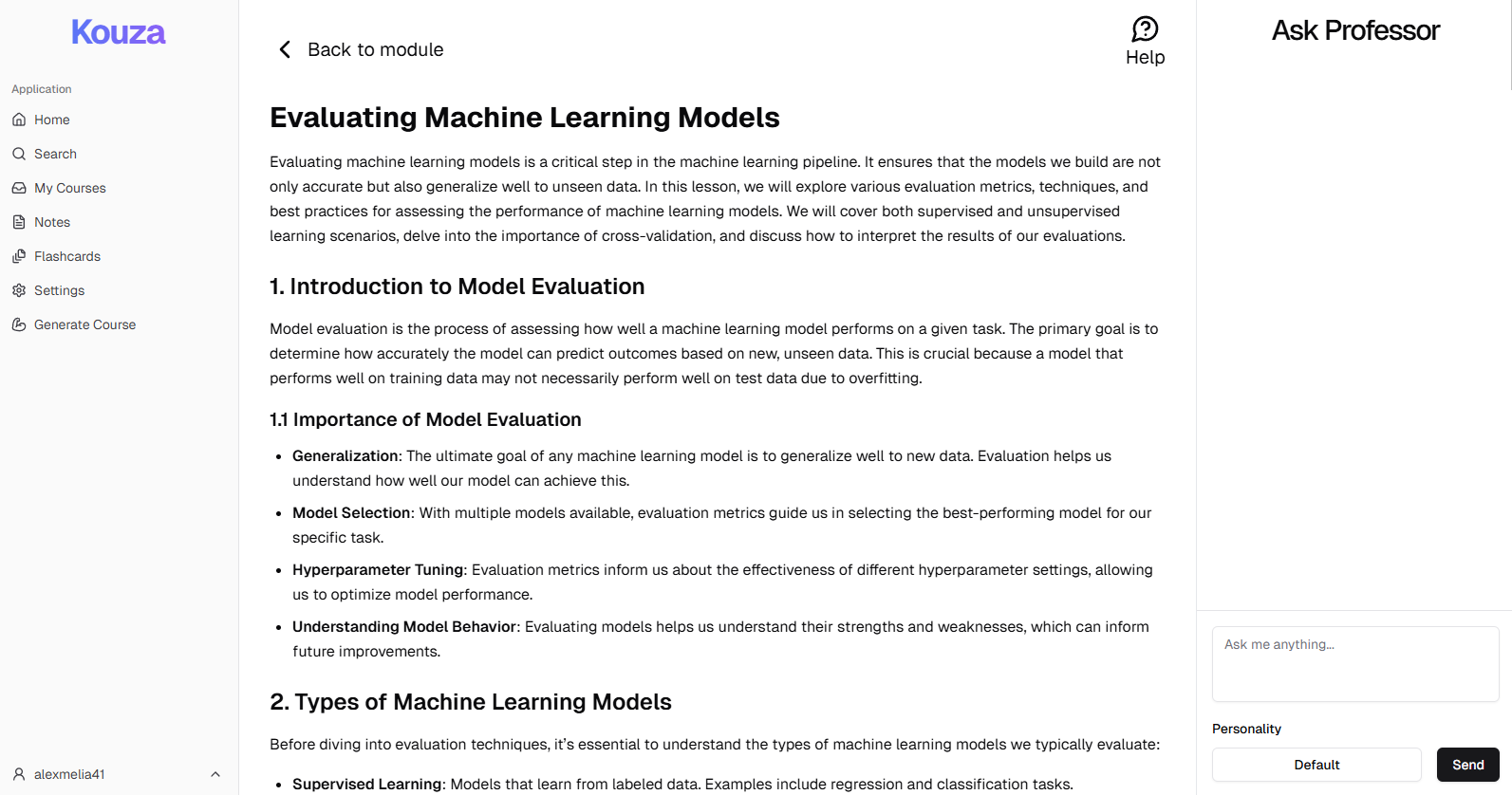Building Kouza: A Modern Learning Platform

Kouza represents a new approach to online learning, combining structured curricula with AI-powered tools. Here's the journey of building this platform and the technical decisions that shaped it.
The Vision
The goal was to create a platform that makes learning more effective by combining traditional course structures with modern AI capabilities. Kouza helps users create well-organized curricula while leveraging AI to generate study materials and quizzes.
Technical Architecture
Frontend
- Next.js 14 with App Router for robust routing and server components
- Tailwind CSS for responsive design
- Shadcn UI for consistent, accessible components
- Zustand for lightweight state management
Backend
- Serverless architecture using Edge Runtime
- PostgreSQL with Prisma ORM
- OpenAI's GPT-4 for content generation
- Vercel AI SDK for streaming responses
Key Features
Curriculum Builder
The curriculum builder allows instructors to create structured courses with modules and lessons. Each component is drag-and-drop enabled, making organization intuitive.
AI-Powered Notes
One of the most powerful features is the ability to generate comprehensive notes from lesson content. The AI analyzes the material and creates structured notes with key points and examples.
SRS Flashcards
The spaced repetition system automatically generates flashcards from lesson content and tracks user progress, optimizing review intervals for better retention.
Challenges and Solutions
AI Response Streaming
Implementing streaming for AI responses was crucial for user experience. We used Server-Sent Events with the Vercel AI SDK to handle real-time content generation while maintaining connection stability.
Data Modeling
Creating a flexible yet structured data model for curricula required careful consideration. We implemented a hierarchical structure using PostgreSQL's recursive queries for efficient navigation.
Looking Forward
Kouza continues to evolve with new features in development:
- Collaborative curriculum building
- Enhanced analytics for learning patterns
- Integration with more AI models for specialized content